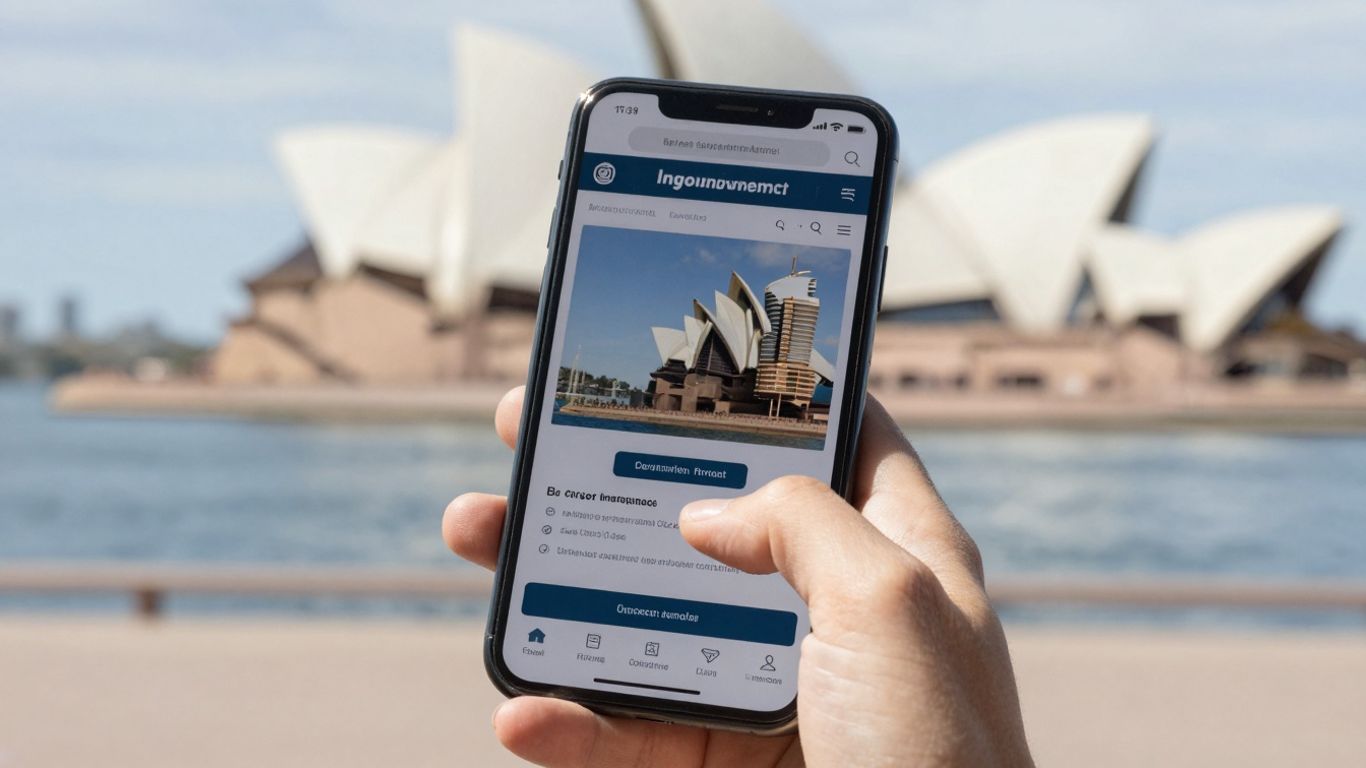Alright cobbers, let’s talk about money. You know, the stuff that makes the world go ’round, or at least keeps the lights on and the fridge stocked. We’re diving into the zero based budgeting formula, a way to get your finances sorted without all the usual headaches. Think of it as giving every dollar a job, so you know exactly where your hard-earned cash is going. It’s not about being stingy, it’s about being smart with your money, Aussie style.
Key Takeaways for Aussies
- The zero based budgeting formula means every dollar you earn is assigned a purpose, ensuring no money is unaccounted for.
- Understanding your current financial situation by tracking income and expenses is the first step to taking control.
- Setting up ‘buckets’ for different spending categories like daily costs, splurges, and savings makes managing money simpler.
- Automating your finances and simplifying your bank accounts can help build long-term wealth and reduce financial stress.
- Focusing on your money habits and behaviour, rather than just spreadsheets, is key to lasting financial success.
Understanding The Zero Based Budgeting Formula
Right then, let’s get stuck into the nitty-gritty of zero-based budgeting. Forget those complicated spreadsheets you see online; this is about making your money work for you, Aussie-style. The core idea is simple: every single dollar you earn gets a job. No more money just disappearing into the ether. It’s about being intentional with your cash, so you know exactly where it’s going and why.
Analysing Your Current Financial Situation
First things first, you’ve gotta know where you stand. This is probably the most important step, and honestly, it can feel a bit confronting. But trust me, it’s way easier than you think, and it’s the only way you’ll actually hit those money goals. You need to get a clear picture of your income versus your outgoings. Grab your bank statements, credit card bills, and any other financial bits and bobs. We’re talking about tracking everything, from your rent or mortgage down to that sneaky daily coffee.
Here’s a quick way to get started:
- Record Everything: Use a simple spreadsheet or a budgeting app to list all your expenses. Don’t just guess; use actual figures from your bills and statements. This gives you the real story.
- Categorise Your Spending: Group your expenses into logical categories like housing, food, transport, entertainment, and debt repayments.
- Compare Income vs. Expenses: See how your total spending stacks up against your income. Are you spending more than you earn? If so, where can you trim the fat? If you’re spending less, fantastic! That surplus is gold.
Taking a hard look at your finances might not be fun, but it’s the foundation for everything else. It’s like checking the foundations of a house before you start renovating.
Tracking Your Income and Expenses
Once you’ve got a handle on your situation, the next step is to keep that momentum going by tracking your income and expenses diligently. This isn’t a one-off task; it’s an ongoing habit. You need to know what’s coming in and what’s going out, day by day, week by week. This detailed tracking is what makes zero-based budgeting so effective. It forces you to confront your spending habits head-on.
Identifying Areas for Improvement
With all your income and expenses laid out, you can now spot where your money is really going. This is where the magic happens. You might be surprised at how much you’re spending on certain things. Look for patterns. Are you consistently overspending in the ‘eating out’ category? Is your subscription tally getting out of hand? Identifying these areas is key to making changes. The goal is to make sure every dollar has a purpose, aligning your spending with what truly matters to you.
Setting Up Your Financial Buckets
Right then, let’s get down to the nitty-gritty of setting up your money buckets. This is where the rubber meets the road, so to speak. Think of these buckets as different pots of money, each with its own job. It’s not about restricting yourself; it’s about giving every dollar a purpose, which makes managing your cash way less stressful. The goal is to have a clear picture of where your money is going and to make sure it’s working for you.
The Daily Expenses Bucket
This is the workhorse bucket. It’s for all those regular bills and everyday costs that keep life ticking over. We’re talking rent or mortgage payments, groceries, petrol, electricity, phone bills – all that jazz. You need enough in here to cover your essential outgoings for the month, maybe a bit extra for unexpected little things that pop up.
The Splurge Bucket
Now, this is the fun one! This bucket is for guilt-free spending. Think of it as your ‘treat yourself’ fund. It could be for a nice dinner out, a new gadget, a weekend away, or whatever makes you happy. Having a dedicated bucket for this stops you from dipping into your other savings or feeling guilty about enjoying yourself. It’s important to have this so you don’t feel deprived.
The Smile Bucket
This bucket is for those bigger, fun goals that you’re saving up for. Maybe you’re dreaming of a holiday to Bali, a new surfboard, or a deposit for a car. It’s for those purchases that bring a smile to your face but require a bit more saving than your daily expenses or splurge money. You allocate a bit to this bucket regularly, and watch it grow until you can make that purchase.
The Mojo Bucket
This is your safety net, your rainy-day fund. It’s for emergencies, plain and simple. If your car breaks down, you have an unexpected medical bill, or you lose your job, this is the money you dip into. Having a solid Mojo bucket means you won’t have to go into debt or derail your other financial goals when life throws a curveball. It’s all about building that financial resilience. You can learn more about bucket budgeting here.
It’s really about creating a system that makes sense for you and your lifestyle. Don’t overcomplicate it. Start simple and adjust as you go. The key is consistency.
Automating Your Financial Future
Let’s be honest, trying to keep track of every dollar can feel like a chore. But what if you could set things up so your money works for you, without you having to constantly think about it? That’s where automating your finances comes in. It takes the stress out of managing your cash and frees you up to focus on what really matters, like paying off debt or saving for that big trip.
Simplifying Your Bank Accounts
If you’ve found yourself drowning in a sea of bank accounts, you’re not alone. Many people start with a good intention but get bogged down by the complexity. The key is to simplify. Think about consolidating where you can, but for the zero-based budget, we’re actually going to use a few specific accounts to sort your money into clear buckets based on your goals. This setup helps you see exactly where your money is going and what it’s for.
The Grow Bucket for Long-Term Wealth
This is where your future self thanks you. The ‘Grow Bucket’ is all about building long-term wealth. We’re talking about your superannuation and any other investments you might have. The goal here is to make sure you’re comfortable when retirement rolls around. No one wants to be stressing about money in their golden years, right? Setting up automatic contributions to your super is a smart move.
Automating Savings and Investments
Once your bank accounts are sorted, the next step is to set up automatic payments. It’s pretty straightforward. First, you’ll want to arrange for your entire take-home pay to go directly into your main ‘Daily Expenses’ account. Then, set up recurring transfers from that account to your other designated buckets every payday. This means:
- Splurge Account: Allocate 10% of your take-home pay here for those fun, non-essential purchases.
- Smile Account: Another 10% goes here for things that bring you joy, like hobbies or gifts.
- Fire Extinguisher Account: Dedicate 20% of your take-home pay to tackle any debts you might have. This is a key part of getting your finances in order.
By setting up these automatic transfers, you’re essentially telling your money where to go before you even have a chance to spend it elsewhere. It’s a powerful way to stick to your budget and build wealth without needing constant willpower. This approach to zero-based accounting helps ensure every dollar has a job.
Addressing Debt and Building Savings

Right, let’s talk about tackling debt and getting some savings happening. It’s easy to get bogged down with owing money, but a zero-based budget gives you a clear path to get ahead. Think of it like this: every dollar you earn has a job, and some of those jobs might be paying off that credit card or car loan.
Creating a Debt Repayment Plan
First things first, you need a solid plan for your debt. Just like trying to lose weight, you need to know where you’re starting and where you want to end up. List out all your debts – credit cards, personal loans, car loans, the works. Note down the amount owing, the interest rate, and the minimum payment for each. Then, decide on a strategy. The ‘snowball’ method means paying off your smallest debts first, regardless of interest rate, to get quick wins. The ‘avalanche’ method prioritises paying off the debt with the highest interest rate first, which saves you more money in the long run. Whichever you choose, stick to it like glue.
- List all debts: Amount, interest rate, minimum payment.
- Choose a repayment strategy: Snowball or Avalanche.
- Allocate extra funds: Use your zero-based budget to assign extra money to your chosen debt.
- Automate payments: Set up automatic payments to avoid missing deadlines and incurring fees.
Paying off debt frees up your income, giving you more flexibility to achieve your other financial goals. It’s a bit like clearing out a cluttered room – suddenly, you have so much more space to work with.
Establishing an Emergency Fund
Now, while you’re chipping away at debt, it’s also smart to build a safety net. This is your emergency fund. Think of it as insurance for your finances. Life throws curveballs – a car breakdown, unexpected medical bills, or even losing your job. Without an emergency fund, these events can push you straight back into debt. Aim to save at least three to six months of essential living expenses. Start small if you need to, even $20 a week adds up. Keep this money in a separate, easily accessible savings account, not mixed in with your everyday spending.
Prioritising Superannuation
Don’t forget about your future self! Superannuation is your retirement nest egg, and the earlier you start focusing on it, the better. Even small, consistent contributions now can make a massive difference down the track thanks to the power of compounding. Check your superannuation statements regularly and consider making extra contributions if your budget allows, especially if you’re not currently meeting the government’s recommended contribution levels. You can also explore options like salary sacrificing to boost your super balance even further. Getting your zero-based budget sorted can help you find those extra dollars to put towards your super.
Mastering Your Money Habits
It’s easy to get bogged down in the spreadsheets and numbers, but mastering your money habits is really about changing how you think and act. Consistency in your actions is way more important than being a financial whiz.
The Psychological Impact of Tracking
When you start tracking everything, it can feel a bit confronting at first. You might see spending patterns you didn’t realise you had, or notice how quickly small purchases add up. This awareness is actually a good thing. It’s like looking in the mirror – you see what’s really there, and then you can decide what to change. Don’t let it get you down; see it as information to help you make better choices.
What Gets Measured Gets Managed
This is a classic saying for a reason. If you’re not keeping an eye on where your money is going, it’s pretty much impossible to get it under control. Think about it: you wouldn’t try to lose weight without tracking your food intake, right? Same principle applies here. By measuring your income and expenses, you’re actively managing them. This is where your zero-based budget really shines, as it forces you to account for every dollar. For Aussies looking to get a handle on their finances, using a budget calculator in Australia can be a game-changer for this very reason.
Focusing on Behaviour Over Spreadsheets
While the spreadsheets and apps are tools, they’re not the end goal. The real win is changing your behaviour. Are you impulse buying less? Are you sticking to your ‘Splurge Bucket’ amount? Are you actually putting money into your ‘Grow Bucket’? That’s the stuff that matters. The spreadsheets just show you if you’re doing it. Try to celebrate the small wins in your behaviour, like resisting that extra coffee or packing your lunch instead of buying it. It’s these consistent, small changes that build up over time.
Your relationship with money starts early, and while habits formed in childhood can stick, they can also be changed. It’s never too late to build better money behaviours.
Here are some simple habits to get you started:
- Live below your means: This sounds obvious, but it means spending less than you earn. It doesn’t mean you can’t enjoy yourself, just that your spending is planned and within your income.
- Automate your savings: Set up automatic transfers from your everyday account to your savings or investment accounts right after you get paid. Out of sight, out of mind.
- Review your budget regularly: Life changes, and so should your budget. A quick weekly or fortnightly check-in helps you stay on track and make adjustments as needed.
Real-Life Application of the Formula

Seeing how the zero-based budgeting formula works in practice can really make it click. It’s not just about numbers on a spreadsheet; it’s about taking control of your cash flow and making it do what you want it to do. Let’s look at a couple of scenarios to show how this plays out.
Sarah’s Journey to Financial Control
Sarah, a nurse from Brisbane, was feeling the pinch. Her income was decent, but she never seemed to have much left over at the end of the month. She decided to give zero-based budgeting a red hot go. First, she tracked everything for a month – coffees, groceries, Netflix, rent, you name it. It wasn’t pretty.
Here’s a snapshot of her initial tracking:
| Category | Amount Spent | Budgeted Amount | Difference |
|---|---|---|---|
| Rent | $1800 | $1800 | $0 |
| Groceries | $950 | $700 | -$250 |
| Transport | $200 | $150 | -$50 |
| Utilities | $300 | $300 | $0 |
| Eating Out | $600 | $200 | -$400 |
| Entertainment | $400 | $100 | -$300 |
| Miscellaneous | $350 | $200 | -$150 |
| Total Spent | $4600 | $3450 | -$1150 |
As you can see, Sarah was consistently overspending, especially on eating out and entertainment. Her income was $4000, so she was already $600 in the red before even considering savings or debt. By using the zero-based budget, she could clearly see where her money was going and she realised she needed to make some serious changes to her spending habits.
Income Allocation in Action
After her initial analysis, Sarah sat down to create her first zero-based budget. She listed her net income as $4000. Then, she allocated every dollar:
- Rent: $1800
- Groceries: $700 (She planned to cook more meals at home)
- Transport: $150
- Utilities: $300
- Eating Out: $200 (A big cutback!)
- Entertainment: $100 (Focusing on cheaper activities)
- Debt Repayment (Credit Card): $300
- Emergency Fund: $200
- Superannuation Boost: $150
- ‘Fun Money’ (Splurge Bucket): $100
This left her with $0. Every single dollar had a job. It felt tight, but it was a plan. She found that by having specific buckets, like the Emergency Fund, she was less tempted to dip into money meant for other things.
Achieving Financial Goals
Within six months, Sarah had paid off her credit card debt and had $1200 in her emergency fund. She was also consistently contributing to her super. The biggest win? She felt a sense of calm she hadn’t experienced before. She wasn’t just reacting to her finances; she was directing them. The zero-based budget formula gave her the clarity and control she needed to start working towards bigger goals, like saving for a deposit on a small apartment. It’s a powerful tool for anyone wanting to get their finances sorted.
The psychological impact of knowing exactly where your money is going can be immense. It removes the guesswork and the anxiety that often comes with managing finances. When every dollar has a purpose, you’re not just spending; you’re investing in your future self.
So, What’s the Takeaway?
Look, getting your money sorted can feel like a big ask, but zero-based budgeting, or even just a simplified system like the one we’ve talked about, really does make a difference. It’s not about being perfect straight away; it’s about making a start and sticking with it. By understanding where your cash is actually going and setting up a clear plan, you’re taking charge. Whether you use a spreadsheet, an app, or just a few bank accounts, the goal is the same: to make your money work for you, not the other way around. Give it a go, and you might be surprised at how much control you can gain.
Frequently Asked Questions
What exactly is zero-based budgeting?
Think of zero-based budgeting like this: every dollar you earn has a job to do. You figure out exactly where your money is going, so your income minus your expenses equals zero. It’s a way to make sure you’re not wasting cash and that your money is working for you, whether that’s for bills, fun stuff, or saving.
How do I start with zero-based budgeting?
It’s pretty simple, really! First, you need to know how much money you’re bringing in each week or month. Then, you track every single cent you spend – the big stuff like rent and the little things like that coffee you grab. Once you know where it’s all going, you can make a plan for it.
What are these ‘buckets’ people talk about?
The Barefoot Investor suggests splitting your money into different ‘buckets’ or accounts. You might have one for your everyday bills (like rent and groceries), another for fun stuff you want to buy (like new shoes or a night out), one for saving up for bigger goals (like a holiday), and a special one for emergencies (your ‘Mojo’ bucket).
Can I automate this whole process?
Yep, automation is your best mate here! By setting up automatic transfers from your main account to your different ‘buckets’ each payday, you take the thinking out of it. Your savings and spending money go where they need to go without you lifting a finger. It makes things way easier and less stressful.
How does this help with paying off debt and saving?
Definitely! This method helps you tackle debt by making sure you’re putting money aside to pay it off. It also helps build up a safety net, like an emergency fund, so unexpected bills don’t throw you off course. Plus, it encourages you to think about your superannuation for the long haul.
Is this more about behaviour than just tracking numbers?
It’s not just about the numbers on a spreadsheet. When you actually see where your money is going, it changes how you think about spending. You’re more likely to stick to your plan because you’re actively involved. It’s more about building good money habits than just crunching numbers.





